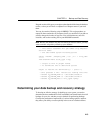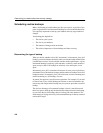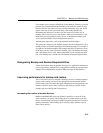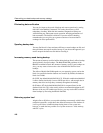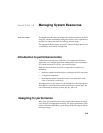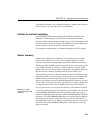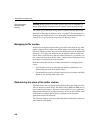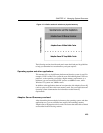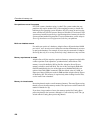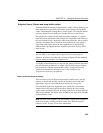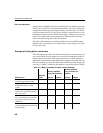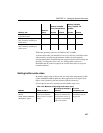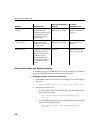
CHAPTER 12 Managing System Resources
421
To make the maximum use of your physical memory, Adaptive Server IQ uses
buffer caches for all reads and writes to your databases.
Utilities to monitor swapping
You can use the UNIX vmstat command, the UNIX sar command, or the
Windows NT Task Manager, to get statistics on the number of running
processes and the number of page-outs and swaps. Use this information to find
out if the system is paging excessively. Then make any necessary adjustments.
You may want to put your swap files on special fast disks.
For examples of
vmstat output, see “Monitoring paging on UNIX systems”.
Server memory
Adaptive Server IQ allocates memory for various purposes from a single
memory pool, called server memory. Server memory includes all of the
memory allocated for managing buffers, transactions, databases and servers.
This concept differs markedly from the way memory was used in versions prior
to 12, which relied heavily on the use of shared memory for buffer caches.
Buffer caches are still a crucial aspect of IQ memory management. However,
they now receive a memory allocation from the server memory pool.
At the operating system level, IQ server memory consists of both heap memory
and shared memory. For the most part, you do not need to be concerned with
whether memory used by Adaptive Server IQ is heap memory or shared
memory. All memory allocation is handled automatically. However, you may
need to make sure that your operating system kernel is correctly configured to
use shared memory before you run Adaptive Server IQ. See the Adaptive
Server IQ Installation and Configuration Guide for your platform for details.
Memory for loads,
synchronizations, and
deletions
To avoid overallocating the physical memory on the machine, you can set the
LOAD_MEMORY_MB database option for operations where loads occur. In
addition to
LOAD operations, this option affects SYNCHRONIZE and DELETE
operations. The
LOAD_MEMORY_MB option sets an upper bound (in MB) on
the amount of heap memory subsequent loads can use. For information on
loads and buffer cache use, see “Memory requirements for loads” on page 424.
For details of the
LOAD_MEMORY_MB option, see the Adaptive Server IQ
Reference Manual.



